From Poul Anderson’s Vault of the Ages to the End of All Things
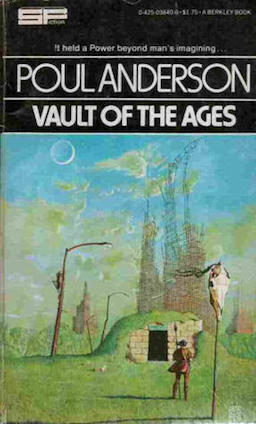 Even though this survey seeks to showcase, specifically, Anderson’s fantasy works, I want to begin with what may be argued to be his first novel: Vault of the Ages. It moreover wouldn’t be all that hard to argue that this work is fantasy, anyway. Perhaps it’s historical fantasy – a kind that anachronistically depicts a medieval northern tribal culture in the future. It’s undeniably post-apocalyptic, and many of these works are not only fantasy but escapist fantasy at that. Who hasn’t been locked into a frustrating, mind-numbing job – a stereotypical office job, for instance – and thought, “If only I had some real problems with which to deal with right now, like zombies, or road warriors, or radioactive mutants”? Who hasn’t secretly yearned for the chance to see what they truly are capable of, to pit their meager store of talents against all that the dangerous world might offer, and who hasn’t secretly concluded that they would do just fine – they would just have to get a gun, of course, and stockpile some food – and take out that weirdo next door, first thing!
Even though this survey seeks to showcase, specifically, Anderson’s fantasy works, I want to begin with what may be argued to be his first novel: Vault of the Ages. It moreover wouldn’t be all that hard to argue that this work is fantasy, anyway. Perhaps it’s historical fantasy – a kind that anachronistically depicts a medieval northern tribal culture in the future. It’s undeniably post-apocalyptic, and many of these works are not only fantasy but escapist fantasy at that. Who hasn’t been locked into a frustrating, mind-numbing job – a stereotypical office job, for instance – and thought, “If only I had some real problems with which to deal with right now, like zombies, or road warriors, or radioactive mutants”? Who hasn’t secretly yearned for the chance to see what they truly are capable of, to pit their meager store of talents against all that the dangerous world might offer, and who hasn’t secretly concluded that they would do just fine – they would just have to get a gun, of course, and stockpile some food – and take out that weirdo next door, first thing!
Not only would I classify Anderson’s first novel as belonging to the species of post-apocalyptic literature, but I’d also call it mundane science fiction, because none of the science in here is extrapolative. In fact, it can be argued that there is no “science” here at all, because the gist of the science is the salvage of iron, to be hammered into common swords and shields, out of radioactive cities. And gunpowder which is hidden in the – you guessed it – Vault of the Ages.
I also might classify this as a boy’s novel, because it begins with an overly informational account of actual time capsules in Atlanta, Georgia and in New York City. It’s hard to see what purpose this introduction might serve other than didacticism, and this consequently suggests an audience that often is perceived to be in need of didacticism. Moreover, the main characters are routinely called “boys,” which, intentionally or not, because of the way in which these characters gleefully and energetically hurl themselves into very scary, very potentially fatal situations, lends this work the character of an adventure novel aimed at Boy Scouts. In other words, for me, this book is short in emotional realism. We shall have to talk about Viking age perspectives in time, but even taking this into account, the boys’ worldviews and actions seem wantonly cavalier.
Here is the premise: in the near future, populations have been decimated by nuclear Armageddon. Of course, Earth’s major cities were the chief targets of atomic warheads, and, in the aftermath, over the centuries, entry into these locations has become forbidden. Readers know that there are perfectly sensible reasons – at least at first – for why one should keep away from these cities. But after a great amount of time – just how much time is necessarily unclear – has elapsed since this catastrophe, in this new Dark Age of martial, tribal cultures, religious prohibition has occluded what at first were most probably entirely rational reasons for avoiding these locations. Later I shall observe that this religious note is a feature in common with some other post-apocalyptic novels. But here I want to point out that, in Vault of the Ages, there is one group of people exempt from this prohibition, probably because these people are survivors of the original catastrophe and never left the cities, and these people are the Smiths, who salvage the iron from the old buildings and make the weapons for the tribal cultures that live about them. Resultingly, and probably in part because of birth abnormalities resulting from radioactive poisoning, these smiths are regarded with the kind of fear and veneration that often is given to priestly classes, only this class is more regarded as a group of witches or warlocks.
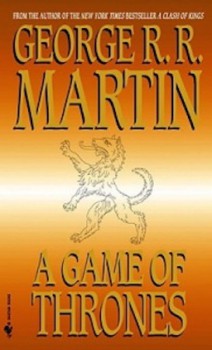 The action in this novel begins with the news that the Lann, probably because of a worsening ice age, are descending from the north on the Dalesmen, killing and colonizing. The Dalesmen must protect their lands from these incursions. So our sixteen-year-old hero, Carl, is sent out to get the help of the smiths.
The action in this novel begins with the news that the Lann, probably because of a worsening ice age, are descending from the north on the Dalesmen, killing and colonizing. The Dalesmen must protect their lands from these incursions. So our sixteen-year-old hero, Carl, is sent out to get the help of the smiths.
If this incursion of enemies from the North reminds you of a very popular TV and book franchise right now, well, it also reminds me of one. George R. R. Martin’s A Song of Ice and Fire, and HBO’s A Game of Thrones, contains similarities to this and other “northern” elements, as well. In his works, Martin has conceived of a planet in which the winters are very, very long – and the summers too. But in the time in which Martin’s story takes place, “winter is coming,” and with it come the Others – undead, unfeeling, cold, vicious, murderous marauders of ice.
Martin describes a form of Ragnarok so much like the Norse concept of the Fimbul-winter (though, unlike the mere three winters for one summer that one of my sources cites, Martin’s winter seems much, much longer) that one is tempted to believe that, directly or not, Martin has drawn inspiration from it. Now, since Martin always is a popular subject both for approbation and for contention, I will happily give my opinion of his books here: the first three books in the series are three of the best books I have ever read; in the fourth book, Martin begins to lose the grasp of his structure; and the fifth book has so many problems that there is no time to enumerate them here.
I feel compelled to share my personal anecdote about Martin. During a World Fantasy Convention in Saratoga Springs, New York, I nearly met the soon-to-be-very-famous writer. At one point during the convention, I was wandering about by myself, among those parties that people host in those special hotel rooms, and one seemingly lightly attended party drew me in. Part of the reason why the party might have been so sparsely attended may have been because the room was dimly lit with blue or black lights. All the people who were here struck me as being quite young and very attractive. In fact, an appealing young woman, whose manner reminded me of something like that of a secretary or of a butler, greeted me at the door. She said, “Would you like a drink?” and gestured to a faintly lit bar upon which were not the party-usual, inexpensive Captain Morgan rums and Smirnoff vodkas and maybe, just maybe Jim Beams – that is, if hard alcohol was offered at all – but top shelf scotches and whiskeys and vodkas. “Yes, thank you,” I said, as she pointed me also to an ice-filled chest stocked with quality micro-brew beers.
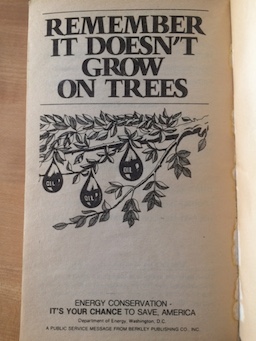
What was this party? Well, my attendant explained to me that this was hosted by a club – The Brotherhood without Banners (an overt reference to the Martin’s books) they called themselves – and the club was devoted to the works of George R. R. Martin, particularly to his epic fantasy series A Song of Ice and Fire.
“Have you read Martin?” my attendant asked me.
I self-consciously sipped my whiskey: glancing about, I saw that, despite the alluring selection of libations, very few of these young and attractive people actually were drinking. I began to wonder if, at World Fantasy Convention, it was possible to unwittingly walk into a fantasy story. This room suggested creepy possibilities: the dim lights, the quality drink, the attractive people, the gracious host.
The… Cult. At the time I didn’t know Martin. In spite of the best efforts of some of my friends, I hadn’t read his books, and, even though I was drinking her whiskey, I decided to be truthful and to tell this to my attendant. Now, since this experience, I have seen enough photographs of a fairly short and portly man with a profuse white beard and a cap that suggests maritime adventures to know that, in this room, sitting deeply reclined in an armchair, was the man himself. About him were assembled his admirers, most of them sitting cross-legged on the floor, all of them apparently hanging on to every word that the venerable writer said. In fact, as I had just begun to focus on this scene, one of Martin’s disciples seemed to be in the midst of an abstruse point about medieval husbandry, and Martin was most certainly making the year of another follower by saying, “I thought about you the other day when…”
Alas, that is all I have to say about my near-brush with the man who, in a few short years, would create a national – global, perhaps – frenzy with his books-turned-TV. But if I may say one more thing about his novels, it will be this: whether Martin is conscious of it or not, his books are a brilliant metaphor for our times. In A Song of Ice and Fire a number of nations and factions squabble amongst themselves over petty king-making disputes, when just north of them, largely unrecognized or outright ignored by their shortsightedness, in the form of Winter and the Others assured destruction descends. To me, this is a fitting description of the current global ecological crisis, one that recently has been dubbed the Anthropocene. This is a global calamity so certain that it may be that most of us are paralyzed into inaction – that is if, drowning within the midst of all our other petty concerns, we pay attention to this danger at all.
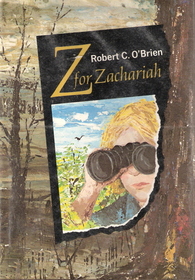 Now, of course, this has not been the first apocalypse we have faced. Most people my age remember drills for the event of a nuclear attack, and we read books like Z for Zachariah. For a short time, not long ago, it seemed that an asteroid was going to be our demise. Further back than this and we appear to be dealing with plagues or overtly superstitious or supernatural concerns in the form of prophecies about the End Times (one as recent as 2012 regarding something I still don’t quite understand about a Mayan calendar). And even if we pay absolutely no regard to these purported global Ragnaroks, there have been tribal defeats, genocides, extinctions, and then, at the purely singular level – the death of the individual.
Now, of course, this has not been the first apocalypse we have faced. Most people my age remember drills for the event of a nuclear attack, and we read books like Z for Zachariah. For a short time, not long ago, it seemed that an asteroid was going to be our demise. Further back than this and we appear to be dealing with plagues or overtly superstitious or supernatural concerns in the form of prophecies about the End Times (one as recent as 2012 regarding something I still don’t quite understand about a Mayan calendar). And even if we pay absolutely no regard to these purported global Ragnaroks, there have been tribal defeats, genocides, extinctions, and then, at the purely singular level – the death of the individual.
What I mean to say here is, whatever your individual beliefs, all of use face an apocalypse of some sort. Even if we don’t see the end of all things in our own times, we certainly will be present for the end of us. For every single one of us, eventually, will die.
The legendary Norse distinguish the death of an individual in one of two ways. Either a man (and it does appear to be men here) dies the ignoble “straw death” as an old man reclining on his bed and thus unable to claim passage into Odin’s Valhalla (though, mysteriously, Odin’s wife Freya claims half of the dead to reside with her in Folkvang), or he dies gloriously in battle and might be chosen for Odin’s halls in Asgard.
But this is only the first end. The Norse myths also teach that, eventually, Loki will escape his dungeon torments, the Midgard serpent will rise out of the sea, the Fenris-wolf will burst his chains, the Giants will launch a collective offensive, and even that the mysterious Surt from Muspelheim will attack with his sword of flame. Even the Gods will die, which means, if we take a metaphorical reading of this myth, then the universe will be unraveled, it will be the end of all things, for it was the Gods, after all, who brought order to the universe, who brought it into being through the slaying of Ymir and the construction of all things out of that Giant material.
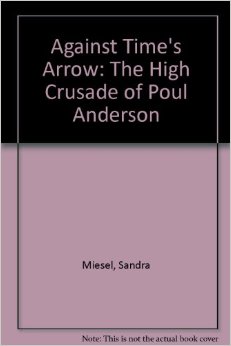 A scientific term for this concept is entropy, and Sandra Miesel, in Against Time’s Arrow: The High Crusade of Poul Anderson, argues that this is a central conceit in both Anderson’s fantasy and in his science fiction. Miesel says that, basically, entropy is the astrophysical concept that energy is constantly degrading. In time – in astrophysical time – there ultimately will be naught but inert, infertile materials. The universe will die. This, in Anderson’s fiction, becomes the main existential force, the ultimate cosmic enemy, the non-mythical Ragnarok with which his heroes must come to terms.
A scientific term for this concept is entropy, and Sandra Miesel, in Against Time’s Arrow: The High Crusade of Poul Anderson, argues that this is a central conceit in both Anderson’s fantasy and in his science fiction. Miesel says that, basically, entropy is the astrophysical concept that energy is constantly degrading. In time – in astrophysical time – there ultimately will be naught but inert, infertile materials. The universe will die. This, in Anderson’s fiction, becomes the main existential force, the ultimate cosmic enemy, the non-mythical Ragnarok with which his heroes must come to terms.
So, I have attempted here to establish that there may be three levels of Ragnarok: the personal, the communal, and the cosmic. Even if humankind may rationalize the first two – well, if I die (some may say) I may live on in another way, or I may live on through my children – or, even if my culture dies, at least there are others, others of my species – when you get to the cosmic – not just the terrestrial – all things will die.
It should be said here that this concept of Ragnarok or Armageddon (the meaning of apocalypse has changed over time – it’s original conception is more like a vision, or a prophecy, an unveiling – and it still works for what we’re talking about here, though it alters the quality of the talk a little bit) is routinely regarded as a specifically Western thing, that only those in the West think in such a linear fashion – with the concept of a beginning and an end – and that those in the East see all as cyclical, never-ending – ending and then beginning again, if you will. But I will say that this is problematized in both the Christian and in the Norse conceptions. In the Christian schema (and the Book of Revelation, by the way, under one iota of textual criticism, becomes much more an allegory than any sort of “prophecy”), the destruction of all things culminates with a New Heaven and a New Earth. Likewise, things begin again after Ragnarok. Of course, critics love to point out that the Norse myths may be heavily influenced by the Christian. But it’s difficult to determine just what the boundaries of these influences may be, and, as such, excites many a Jungian who seeks for a universal archetype and some sense of a cosmic human narrative.
Oh, and to add the scientific schema to all of this: all astrophysical material, after the Big Bang, should be perceived as a rapidly expanding balloon. All material – you, me, Earth, the Solar System, our galaxy, all of the universe – should be seen as flies caught in amber, stuck (yes, in this perception, there is no proper place for the concept of “time”). At the end of its expansion, the universe should quite probably contract again, all back into an increasingly compressing black hole that is theorized as the focal point of the Big Bang.
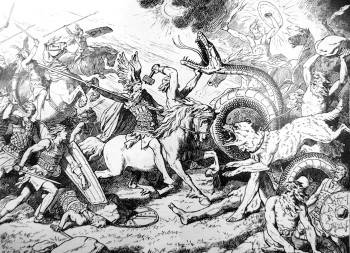 And what’s to stop the Bang from occurring again? And, for that matter, what happens when the universe contracts? And what happens when it Bangs again?
And what’s to stop the Bang from occurring again? And, for that matter, what happens when the universe contracts? And what happens when it Bangs again?
You see? Cycles.
Miesel proposes that Anderson’s fiction provides attitudes for living in the face of all this. The defining characteristic of these attitudes is borrowed from the Old Norse perspective concerning death and Ragnarok – the Twilight of the Gods, the end of all things. What does Anderson’s fiction teach us to do or to think? Well, our perspectives may contain one or two things: either we hope that, despite a materialist conception of the universe, there is a creator or something with enough power to stand in for one that can save or alter the situation for us. Or we ourselves alter the situation. And, if there is no possible alteration, then we go down – but not for want of fighting. In many ways this perspective is kin to Tolkien’s sense of eucatastrophe (outlined in his “On Fairy Stories”) a concept that articulates how, when things appear to be at their very worst, something might happen to make it right. Either a god or a force might intervene, or, at the very end, some mortal just happens to work out the solution. Or a mixture of both, which is what Tolkien teaches through his narrative construction in The Lord of the Rings. In that work, many just right “accidents” result in a victory for the Fellowship and its allies. This book teaches that to give up hope is a great sin, because the rejection of hope is a giving up of even the possibility of a solution. We must fight against entropy and death, even though both are certain, because it’s the right thing to do. And, despite all, hope may come at last, just when it is most unlooked for.
Unlike in Tolkien’s work, in Anderson’s Vault of the Ages there is a kind moderating tension between spiritual and material perceptions of the universe. As an agent actively working against entropy (in this case seen as the invading forces of the Lann) Carl must defy the religious authority of his clan who, for reasons that the reader can understand, has inherited a legacy of prohibition. Whatever objects might be in the vault of the ages very well may be part of the same forces that resulted in the desolation of the world in the first place. We see this consideration in more than one post-apocalyptic work: Kurt Vonnegut routinely expresses horror at the way humans tinker with the natural world in the construction of greater and yet even more destructive monsters. In Walter M. Miller, Jr.’s A Canticle for Leibowitz, an age that directly follows what we sometimes call the Atomic Age is referred to as the Age of Simplification (because it was all that scientific complication that resulted in the catastrophe, wasn’t it?), in Margaret Atwood’s Maddaddam Trilogy, the fundamentalist God’s Gardeners start living, as best as they can, within the strictures posed by considerations of sustainability. There is even some of this in Robert Silverberg’s engrossing science fantasy At Winter’s End, whose title and epigraph borrow directly from the Voluspa, the first book of the Icelandic Poetic Edda. It’s also interesting that all of these works contain, in some form, religious views and figures that arise from a distant, poorly understood sense of history that has transformed many physical realities and histories into myths and legends.
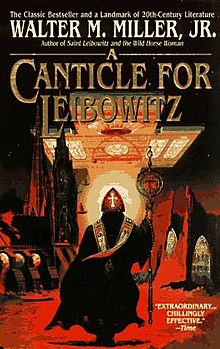 In Vault of the Ages, Carl, whose purpose in that work is to defy religious prohibitions and to unearth something in the vault that might aid his people against the invading Lann, demonstrates a healthy respect for both this and an awareness of his own human intellectual fallibility:
In Vault of the Ages, Carl, whose purpose in that work is to defy religious prohibitions and to unearth something in the vault that might aid his people against the invading Lann, demonstrates a healthy respect for both this and an awareness of his own human intellectual fallibility:
Was he right, even? Who was he to challenge laws made centuries before his birth? Was he so much wiser than his elders that he could tell them what was truth?
Or even if he was right, even if the old powers could again be given to the world – was that for the best? How did he know that the ancients had been happy? How did he know that a rebuilding would not start anew the terrible old cycle of wars and cruelty and woe, until the world crashed in a second Doom?
If there truly is a god, someone who reigns over all, perhaps this person will intercede, will help us.
Or we have to help ourselves. And, in the long view, in the face of cosmic, all-consuming annihilation, it seems unlikely that we can achieve this. But we must do what we can.
When it comes to the Anthropocene, perhaps, as unlikely as it appears, there will be a techno-fix. I myself take comfort in the idea that we haven’t learned all that apparently there is yet to know – wouldn’t that be the depths of despair, if it were true. Just two interesting sidebars that I see to this scientific problem here is 1. One would think that, as the universe expands, it would slow down. Instead, it is accelerating, and we don’t know why this is. 2. Quantum physics and astrophysics don’t line up. They are doing two different things, following two different sets of rules. There is still more to be learned, and perhaps, if we actually take time to learn this, perhaps even as a mere side effect to growing knowledge and awareness, we may save ourselves from extinction.
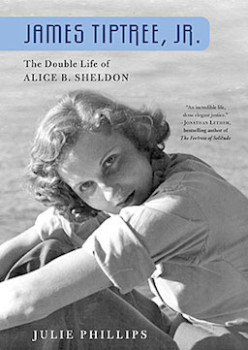 Because that appears to be the human purpose here. Alice Sheldon (aka James Tiptree, Jr.) attempted to fight against entropy – a loss of information – by adopting a belief in “negentropy” – the opposite of entropy, a compounding of information. But the compounding of information, in her particular expression of negentropy achieved through writing and in any others, only hastens entropy. The more complicated the structure (ink, paper, typewriters, printing presses), the more resources are consumed in its service. It appears that even fighting against the eventuality of entropy only accelerates its approach. This truly is the Norse fatalism about which we have heard so much!
Because that appears to be the human purpose here. Alice Sheldon (aka James Tiptree, Jr.) attempted to fight against entropy – a loss of information – by adopting a belief in “negentropy” – the opposite of entropy, a compounding of information. But the compounding of information, in her particular expression of negentropy achieved through writing and in any others, only hastens entropy. The more complicated the structure (ink, paper, typewriters, printing presses), the more resources are consumed in its service. It appears that even fighting against the eventuality of entropy only accelerates its approach. This truly is the Norse fatalism about which we have heard so much!
Still it seems that we must use the time we have now. And, while we are here, why not enjoy it? To bring us out, let’s read Anderson’s Conan-esque musings on life and death, given through the perspective of Carl Ralphson, who belongs to a Viking age culture that has arisen again in a speculative future Dark Age:
The sun was sliding down the last quarter of its journey toward darkness, and the mellowed, ivy-covered walls glowed with a golden light. Trees rustled here and there in the faint breeze. Through the hot reek of blood and sweat, Carl smelled a cool, damp breath of green earth and summer blowing from the great forest. He flexed his aching muscles, taking glory in their very throb and weariness. His heart beat steadily and strongly, air filled his breast and tingled in his veins. Every ridge on the sword haft under his fingers sent a message to him, telling of a real world, one to be grasped in the hands and known by the living body – a world of life and mystery, a world of splendor and striving and wistful beauty. Yes, it was good to live, and even if he was now to join the sun in an endless night, he was glad of what he had been given.
Very interesting piece. Thanks for doing it.
With Tolkien I am of the opinion that the disjunction isn’t exclusive (i.e. either hope in some supernatural help or attempt to do something about it). It seems perfectly plausible to choose both disjuncts.
I’d also caution your last comment: “Still it seems that we must use the time we have now. And, while we are here, why not enjoy it?” That seems very close to the old hedonist/nihilist mantra: “Eat, drink and be merry for tomorrow we die.” And I doubt that’s what you meant.
Also the following quote cracked me up: “Who hasn’t been locked into a frustrating, mind-numbing job – a stereotypical office job, for instance – and thought, “If only I had some real problems with which to deal with right now, like zombies, or road warriors, or radioactive mutants”?”
I get what you’re saying there, but I doubt that this thought has ever consciously crossed my mind.
Thanks, James.
I certainly agree with you: Tolkien did not see the two attitudes regarding entropy as mutually exclusive, and I believe that this combining of the two is a fundamental reading of The Lord of the Rings. God helps, but humans must demonstrate their faith in continuing to work and to fight in the face of all fading hope. This attitude may be applied to the Anthropocene through the belief that we must keep learning and working towards a solution for as long as we have the time. In fact, I had hoped that I could say some more about Silverberg’s novel, because his main perspective character says almost just that: his is a kind of philosophical courage. He hopes to learn and understand as much as he possibly can before his inevitable death.
And you are right in suspecting that I did not intend hedonism with my idea that we should enjoy being alive. What I meant is more akin to what I quote from Anderson.
And you’ve never fantasized about killing zombies in a bleak, war-torn world? 🙂
James,
I have found myself in such jobs, and that thought — almost verbatim — has crossed my mind.
Very interesting article, Gabe.
Just one quick, trivial, note. VAULT OF THE AGES was indeed a “boys’ novel”, in the sense that it was first published as a “Winston Juvenile”, one of many novels John C. Winston Publishing put out in the 50s and 60s, in what would now be called the YA category, then called juvenile. (The John C. Winston company became the “Winston” part of Holt Rinehart and Winston, a once promiment publishing firm. The Rinehart in that name was bestselling author Mary Roberts Rinehart’s son Stanley.)
[…] more primal or mythological, something perhaps borrowed from the Norse mythology that I touched on last time, something that posits that in the beginning was Chaos – the Ginnungagap, intense cold on one […]